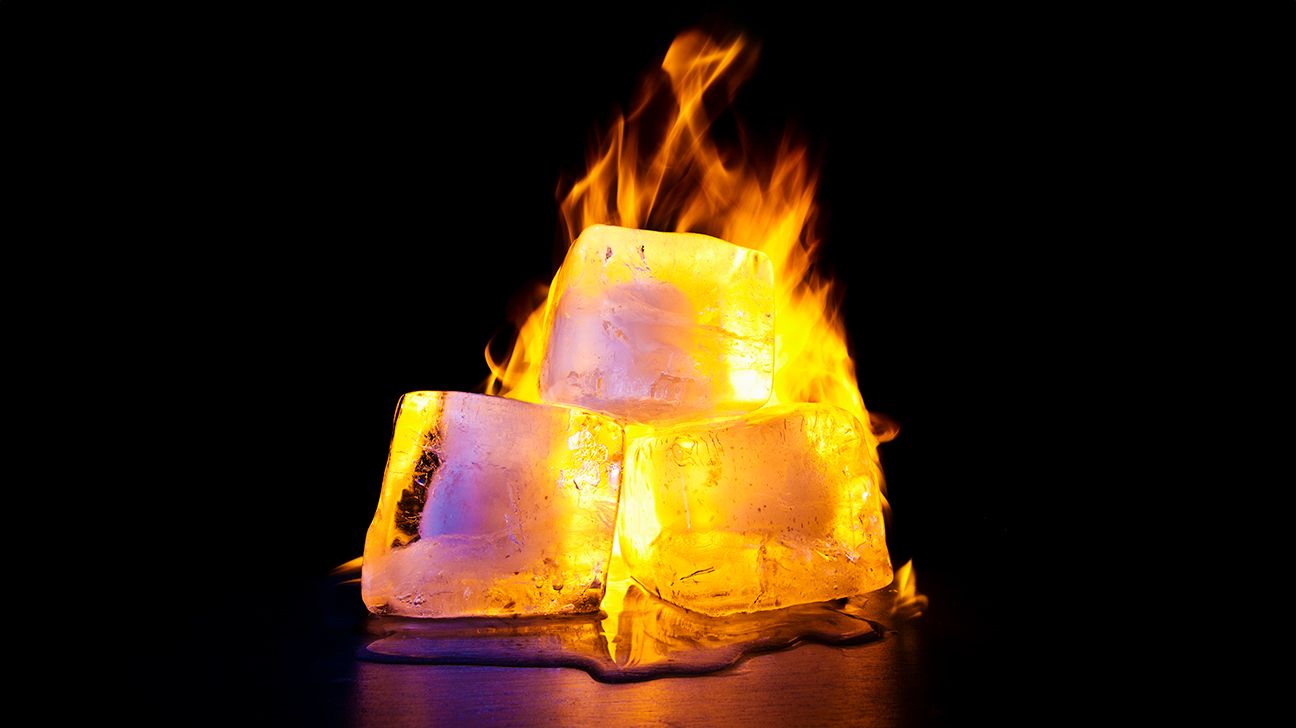Experts recommend using ice after an injury, for sudden onset pain, or for inflammation. Heat is ideal for chronic pain or for injuries that are no longer swollen.

You likely have heard about using a hot or cold compress for your neck pain — but when do you need to ice, and when should you reach for the heat?
So far, there’s no evidence that cold or heat is more beneficial than the other for easing pain or strain. That said, professionals generally recommend icing new or swollen injuries. When the swelling has subsided, heat is advised to relieve any lingering tension or stiffness.
Here’s what to know.
In general, ice is recommended for:
- acute neck injuries (like whiplash)
- sudden onset pain
- swelling
- soothing muscles after exercise
And heat is recommended when:
- swelling has diminished
- you have chronic or recurring neck stiffness and tension
- warming up muscles prior to stretching or exercise
Ice or use heat for about 20 minutes several times a day for injuries, or as often as needed to feel relief.
Do you put heat or ice on first?
There’s
For the best effect, you may try alternating between them to see which works best for your neck pain.
The
This is ideal for numbing the sensation from muscle spasms or more extreme pain. If you’re on bedrest due to neck pain or strain, ice is probably ideal.
Heat, meanwhile,
This allows more nutrients and oxygen to be delivered to the affected area, which can promote healing. It also helps loosen up tight muscles and make tissue more flexible. When you’re off bedrest and want to continue with day-to-day tasks, heat is ideal.
Keep in mind that according to an
So it may not matter whether you choose heat or ice, but rather what feels best for your unique situation.
You may want to alternate between hot and cold therapy for optimal results.
Did you know that neck pain is the
You should also seek emergency medical care if:
- you experience tingling, numbness, or weakness in one arm or hand
- your neck pain was caused by a sudden injury (like a car accident or sports incident)
- your symptoms don’t decrease after a week of self-care
- the pain worsens when you lie down
- the pain keeps you up at night
- you lose control of bowel movements or urination
- you’re having difficulty with walking or balancing
Other ways to loosen up tight or painful neck muscles include:
- over-the-counter pain relievers like ibuprofen
- gentle stretching
- exercises for neck pain
- yoga for neck pain
- physical therapy
- massage therapy
- chiropractic care
- acupuncture
- limiting activity that increases neck tension
- using a headset when talking on the phone
- maintaining proper posture
- wearing comfortable footwear
- taking regular breaks when driving or doing sedentary activity
- minimizing stress
- practicing relaxation techniques
- using a firm mattress and supportive pillow
Whether you should use hot or cold therapy for neck pain depends on your unique situation.
Experts generally recommend using ice for new injuries or sudden onset pain, as it reduces swelling. Heat is ideal for chronic muscle tightness or stiffness since it boosts circulation.
If your neck pain doesn’t improve after a week of self-care, visit a doctor.
Seek emergency care if you experience numbness in one arm or hand alongside neck pain, if you’re struggling to walk or balance, or if you’ve lost control of bowel movements or urination.
